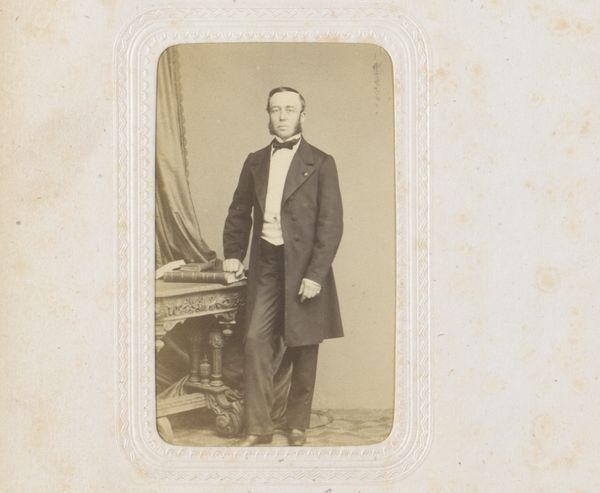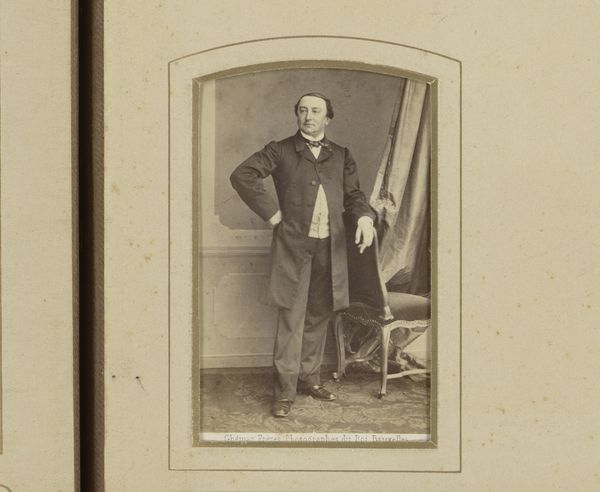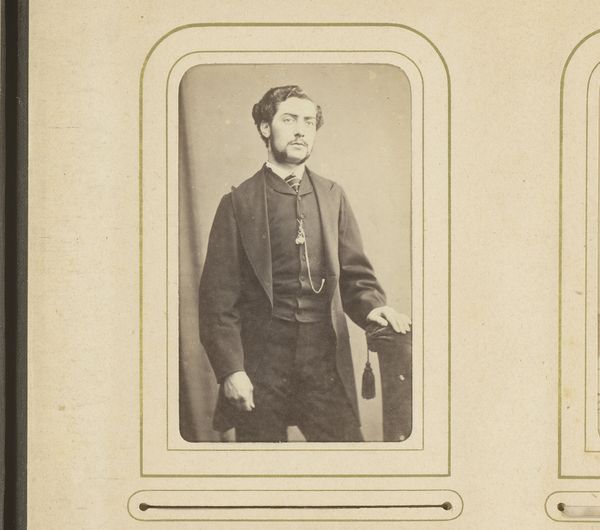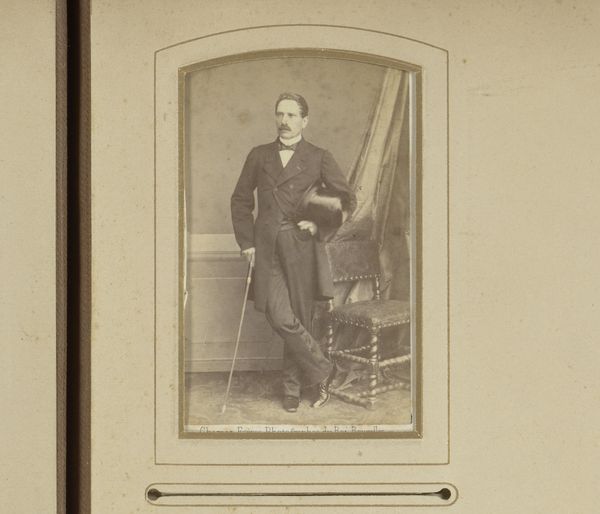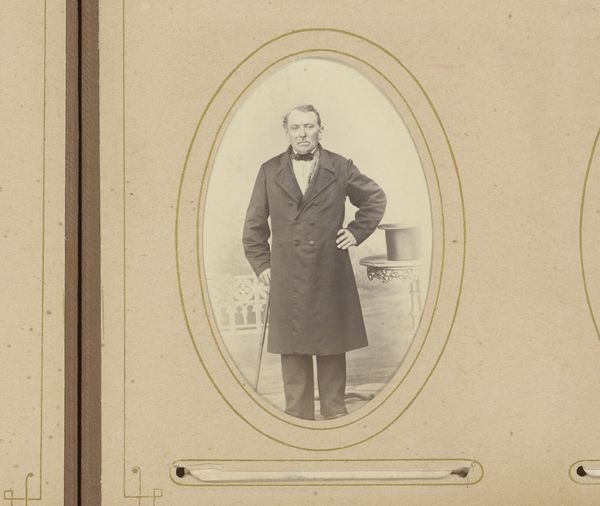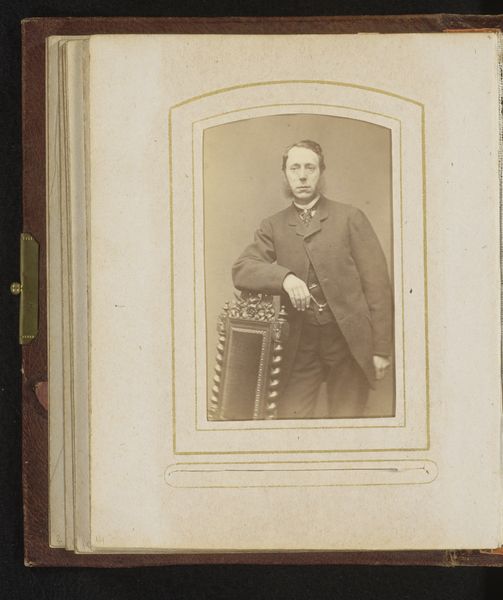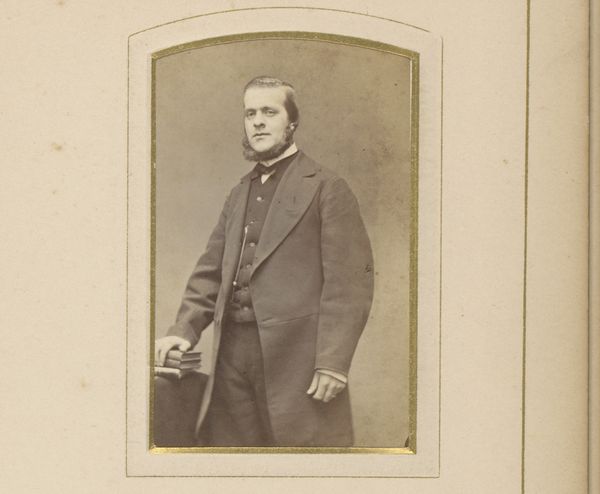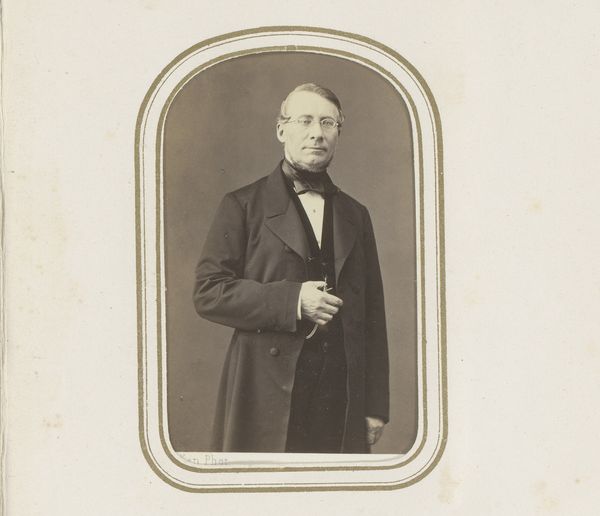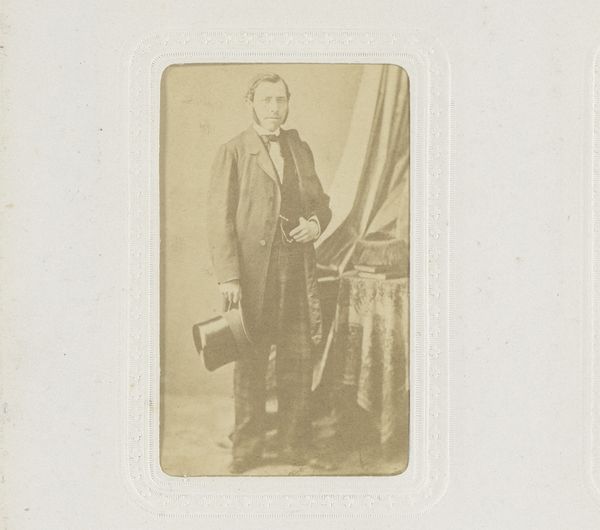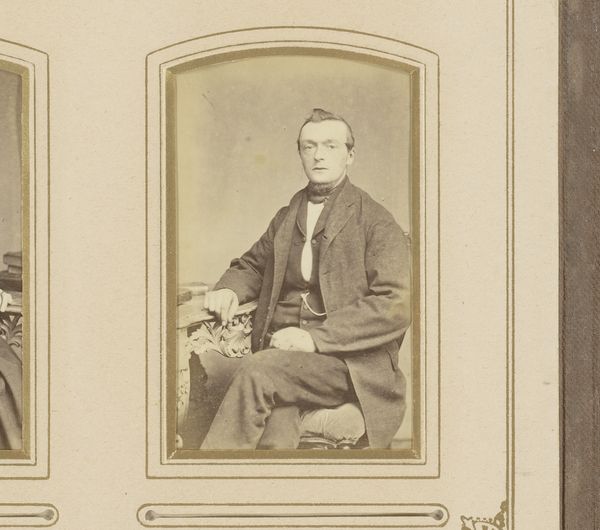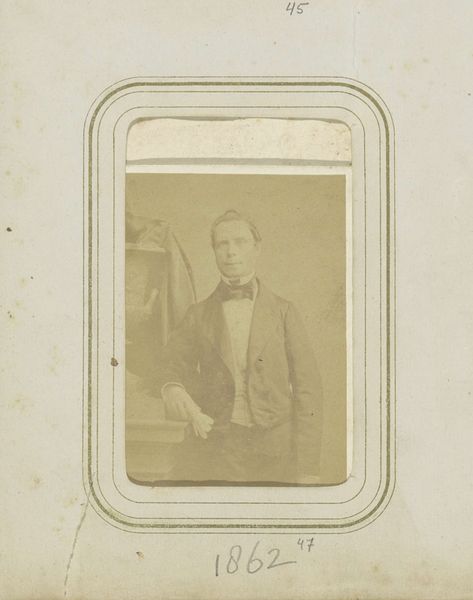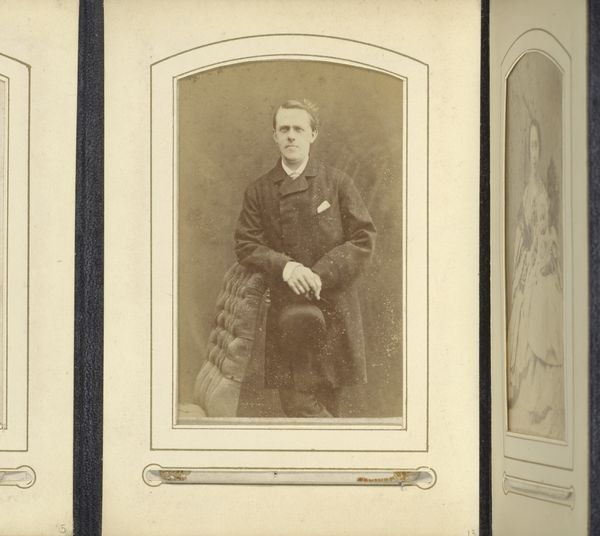
photography
#
beige
#
masculine design
#
aged paper
#
toned paper
#
earth tone
#
muted colour palette
#
photography
#
brown and beige
#
home decor
#
warm-toned
#
genre-painting
#
realism
#
gold element
Dimensions: height 85 mm, width 51 mm
Copyright: Rijks Museum: Open Domain
Editor: This photograph, "Portret van een staande man," taken sometime between 1860 and 1870 by Joseph Vandenhoff, presents a full-length portrait encased in what appears to be a gilded frame within an album. The sepia tones give it a sense of formality, and yet I'm drawn to the sitter's eyes. How do you interpret this work? Curator: The photograph is, indeed, rich with information beyond just the sitter's likeness. The figure, rigidly posed in formal attire, complete with a bow tie and walking stick, speaks to a certain societal expectation of masculinity in the Victorian era. His clothing, although perhaps subtly individual, largely adheres to established codes. The real cultural weight resides in how photography, as a relatively new medium, both democratized and formalized portraiture. Editor: Democratized? How so? Curator: Think of the sitter holding the walking stick as an assertion of respectability in an age of upheaval and emerging class structures. The proliferation of photography meant likenesses weren’t just for the elite, thus the "genre painting" feel; photography granted a symbolic access previously unavailable. Yet, simultaneously, the formalized posing and composition mimicked painted portraits, reinforcing a sense of tradition. Does the frame and how it boxes in the sitter suggest anything to you? Editor: Perhaps a sort of capturing of time and place, or even the constraints of societal expectation as you mentioned? Curator: Precisely! The frame signifies a conscious attempt to contain and preserve an ideal. The tones speak to the fragility and ephemerality of memory, even while the act of photographic preservation resists such loss. Editor: That's fascinating – I hadn't considered the duality of preservation and ephemerality inherent in the medium itself. It adds another layer of meaning to the portrait. Curator: Absolutely. Considering those interwoven symbols reveals the powerful emotional landscape embedded in even seemingly simple images.
Comments
No comments
Be the first to comment and join the conversation on the ultimate creative platform.
